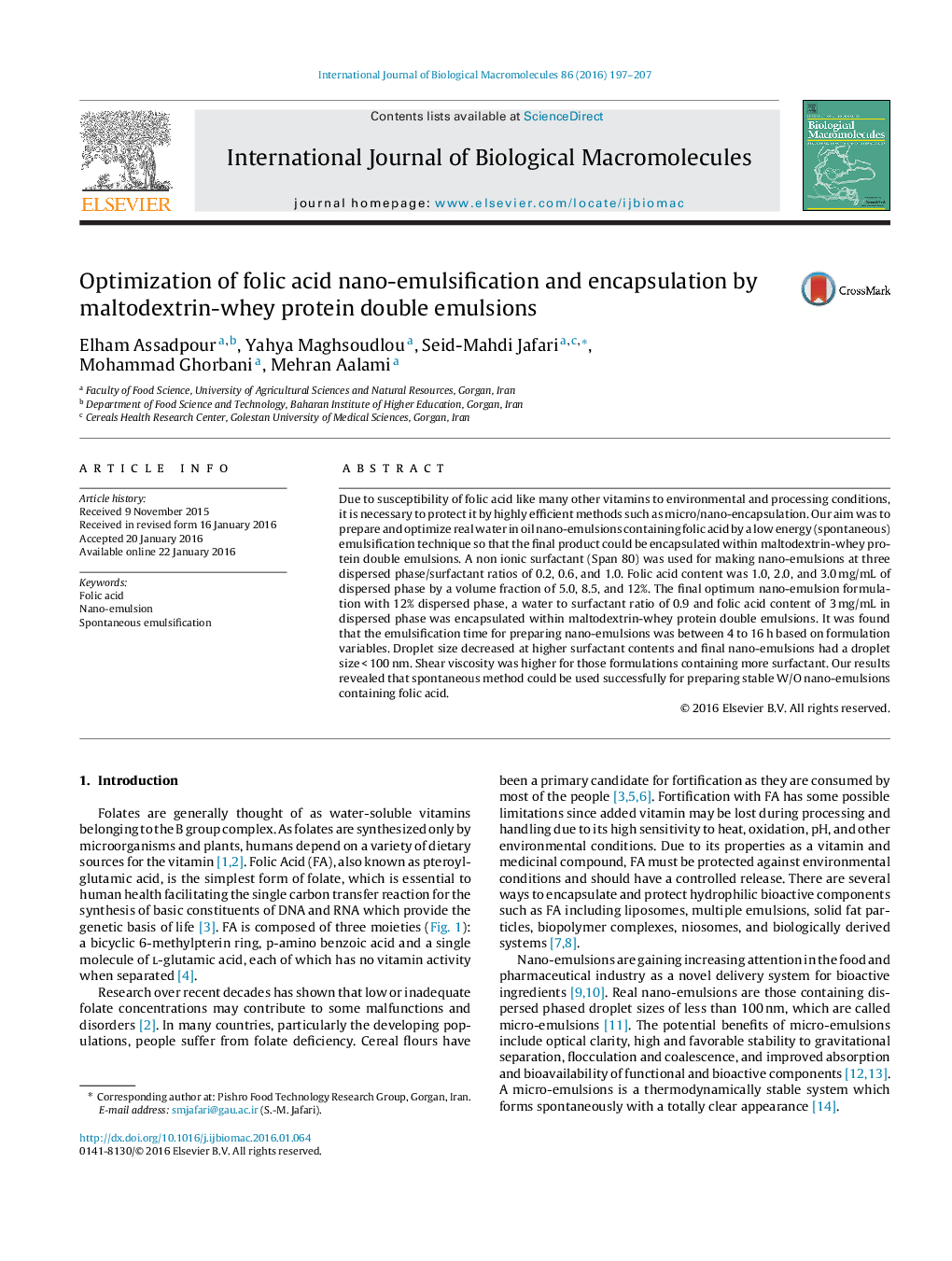| Article ID | Journal | Published Year | Pages | File Type |
|---|---|---|---|---|
| 1985894 | International Journal of Biological Macromolecules | 2016 | 11 Pages |
•Folic acid was successfully formulated within nano-emulsions.•Emulsion droplet size of less than 100 nm was well achievable.•The most important factor for preparing nano-emulsions was surfactant content.•Maltodextrin-whey protein complex could successfully encapsulate folic acid.
Due to susceptibility of folic acid like many other vitamins to environmental and processing conditions, it is necessary to protect it by highly efficient methods such as micro/nano-encapsulation. Our aim was to prepare and optimize real water in oil nano-emulsions containing folic acid by a low energy (spontaneous) emulsification technique so that the final product could be encapsulated within maltodextrin-whey protein double emulsions. A non ionic surfactant (Span 80) was used for making nano-emulsions at three dispersed phase/surfactant ratios of 0.2, 0.6, and 1.0. Folic acid content was 1.0, 2.0, and 3.0 mg/mL of dispersed phase by a volume fraction of 5.0, 8.5, and 12%. The final optimum nano-emulsion formulation with 12% dispersed phase, a water to surfactant ratio of 0.9 and folic acid content of 3 mg/mL in dispersed phase was encapsulated within maltodextrin-whey protein double emulsions. It was found that the emulsification time for preparing nano-emulsions was between 4 to 16 h based on formulation variables. Droplet size decreased at higher surfactant contents and final nano-emulsions had a droplet size < 100 nm. Shear viscosity was higher for those formulations containing more surfactant. Our results revealed that spontaneous method could be used successfully for preparing stable W/O nano-emulsions containing folic acid.
